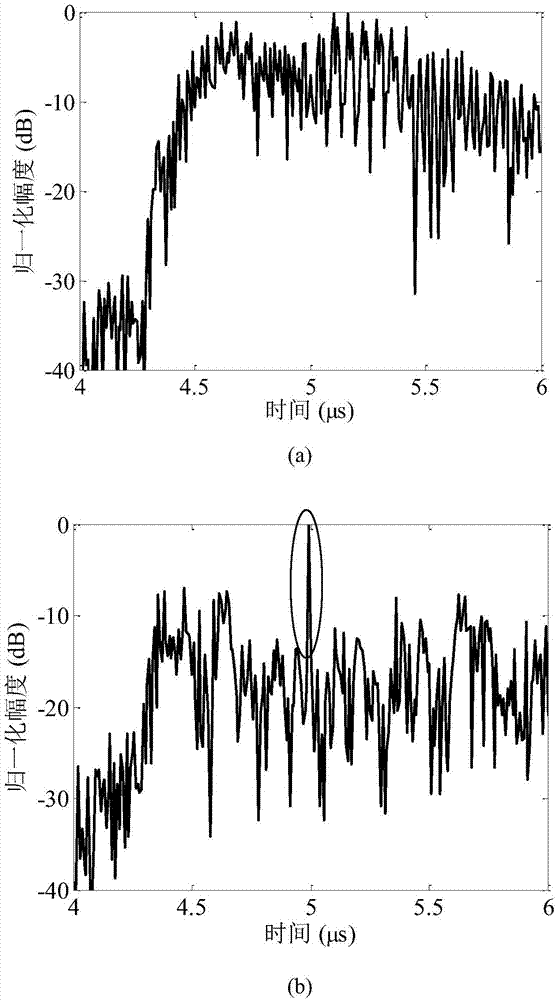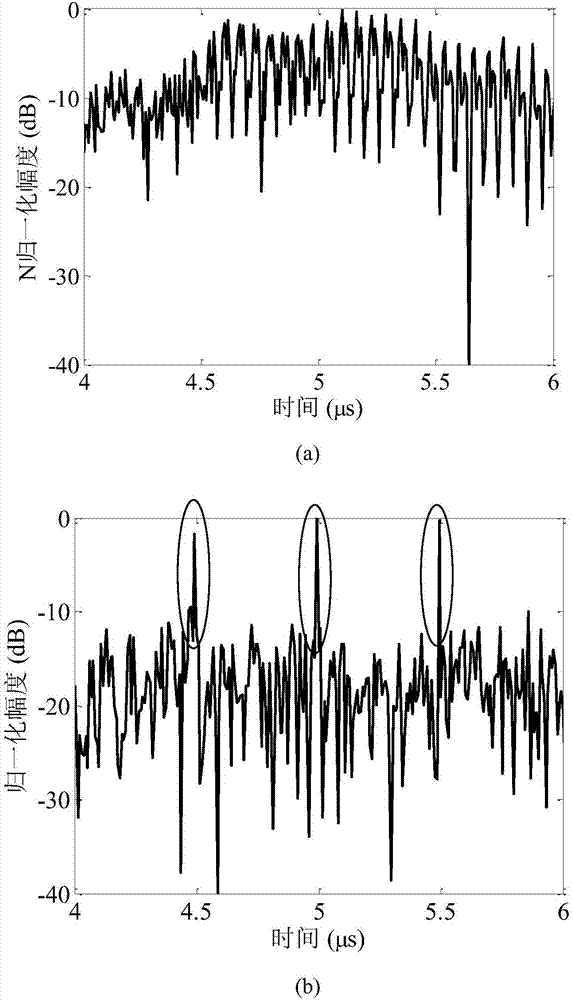Anti-signal-dependent-interference cognitive constant modulus waveform design method
A waveform design and dependent technology, which is applied in the field of radar anti-jamming, waveform design and interference suppression, can solve the problems of reducing waveform utilization rate and unable to suppress fast-time forwarding type interference, etc.
- Summary
- Abstract
- Description
- Claims
- Application Information
AI Technical Summary
Problems solved by technology
Method used
Image
Examples
Embodiment Construction
[0048]The present invention mainly adopts the method of computer simulation for verification, and all steps and conclusions are verified correctly on MATLAB-R2014a. The specific implementation steps are as follows:
[0049] Step 1. Initialize parameters:
[0050] The initialization system parameters include: the number of sub-pulses in the pulse N=128, the iteration convergence coefficient ε 1 =10 -5 , ε 2 =10 -4 , taking SMSP interference as an example, the number of sampling is L=16, and the number of repetitions is q=8, so the signal transfer matrix J c for
[0051]
[0052] Step 2. Establish a mathematical model of the optimization problem:
[0053] 2.1. According to the waveform design criteria 1) reduce the integrated cross-correlation sidelobe level (ICSL) between the interference signal and the radar transmission signal to suppress the interference signal, and establish
[0054]
[0055] in,(·) H represents the conjugate transpose, is the mapping matrix...
PUM
 Login to View More
Login to View More Abstract
Description
Claims
Application Information
 Login to View More
Login to View More - R&D
- Intellectual Property
- Life Sciences
- Materials
- Tech Scout
- Unparalleled Data Quality
- Higher Quality Content
- 60% Fewer Hallucinations
Browse by: Latest US Patents, China's latest patents, Technical Efficacy Thesaurus, Application Domain, Technology Topic, Popular Technical Reports.
© 2025 PatSnap. All rights reserved.Legal|Privacy policy|Modern Slavery Act Transparency Statement|Sitemap|About US| Contact US: help@patsnap.com



